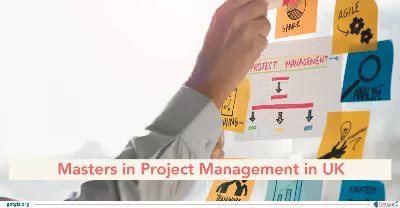Spain Education System 2025-26: Reforms, Vocational Training & Inclusion
Updated On
-
Copy link
-
-
Limited-time offer : Access a free 10-Day IELTS study plan curated for you

Table of Contents
- Overview of Spanish Education System 2025-26╠²
- Structure of the Education System in Spain
- Key Reforms Under SpanishNew Educational Law (LOMLOE)╠²
- Vocational Education Reform in Spain (Fully Implemented 2025/26)╠²
- Regional Language Policy Update in Spain
- Increased Government Investment in Education and Student Support╠²
- Spain's Education System Evaluation
- Advantages of the Spanish Educational System
- Is Spain the Right Educational Destination for You?
Did you know that in the academic year of 2022-23, Spanish universities closed admissions for around 208,000 international students, and this number is expected to grow steadily through 2025-26. This big milestone reflects that Spain is among the worldŌĆÖs most sought-after destinations for higher education.╠²
Known for its high academic standards and innovative programs, Spain offers a broad arena of study options from science, technology, humanities, and the arts across its public and private institutions.
Apart from academic goodness, SpainŌĆÖs education system has now made financial aid and scholarship programs better, making higher education more accessible than ever for international students. Alongside, the country is promoting a rich cultural environment and ongoing reforms enhancing digital learning and student support.╠²╠²
LetŌĆÖs explore why Spain continues to attract students worldwide in 2025-26 and beyond.
Overview of Spanish Education System 2025-26╠²
The education system in Spain is made up of key stages, planned to provide a comprehensive, inclusive, and high-quality learning journey from early childhood through higher education. Compulsory education spans from ages 6 to 16, covering primary and secondary schooling, with optional stages before and after. The system uses a national curriculum while allowing regional variations to accommodate SpainŌĆÖs cultural diversity.╠²
Structure of the Education System in Spain
The educational structure in Spain is categorized into four segments, comprising optional stages like preschool and upper secondary education, alongside compulsory phases such as primary and secondary education. Let's delve into the details:
1. Nursery and Preschool in Spain
Nursery and preschool education in Spain remain entirely optional. Nursery schools, lacking state funding, require parents or guardians to cover fees. Preschool, catering to children up to six years old, is free of charge. Here, youngsters develop both physical and mental skills, delving into reading, writing, and the alphabet.
2. Primary Education
Mandatory primary education in Spain commences at six years old and concludes at twelve. It consists of three cycles, each spanning two years. This phase is cost-free, focusing on general subjects like languages, mathematics, literature, natural and social sciences, and arts.
3. Secondary Education
The third, compulsory phase, secondary education, accommodates students aged 12 to 16. This stage encompasses state schools, private institutions, or state-funded private schools. Unlike primary education, secondary education is divided into two 2-year cycles, catering to ages 12-14 and 14-16. Subjects remain similar but are presented at a more challenging level.
There is a transformative shift in Spanish secondary education with the approval of a Royal Decree by Spain's Council of Ministers on April 4th, 2022. This decree, aligned with the new educational law (LOMLOE), heralds changes aimed at fostering critical thinking and real-world application of knowledge.
The following is a summary of the new educational law's changes:
A. Implementation Timeline
- Changes commence in the 2022-2023 academic year for the first and third years of ESO (Educaci├│n Secundaria Obligatoria)
- Extended application to the second and fourth years starting the 2023-2024 academic year.
B. Educational Focus
- Emphasis on critical thinking and practical application over traditional theoretical learning methods.
C. Incorporation of New Concepts
- Concepts such as gender equality, sex education, and health education
D. Addition of New Subjects
- Technology and Digitisation as part of the curriculum
- Redistribution of hours with a primary focus on the Spanish Language and Literature
E. Student Progression
- Teachers gain the authority to determine students' advancement based on the fulfillment of key objectives
4. Upper Secondary Education
Mandatory for Spanish students, upper secondary education follows compulsory secondary education. Afterward, students can opt for a 2-year bachelor's certificate, paving the way for university education, or pursue vocational training tailored for skilled job markets. International students typically seek admission to Spanish universities or vocational training programs.
Articles curated to your interest: Best Spain Universities: Your Gateway to Academic Excellence
4A. Bachillerato: Gateway to Higher Education
Bachillerato, a 2-year program in Spain, equips 16-year-olds with specialized skills in sciences, humanities, and arts. The resulting certificate opens doors to university education or vocational training, offering a flexible curriculum structured by Autonomous Communities.
4B. Vocational Training: Crafting Skills
Ciclos Formativos, spanning 4-years, provides vocational training with options like Grado Medio (two years) and Grado Superior (an additional two years). Accessible to graduates and those seeking specialized skills, this pathway prepares students for diverse careers.
4C. Universities in Spain: Global Education Hub
With 76 universities, including 45 state-funded, Spain's higher education demands a Bachillerato certificate and success in 'Selectividad' exams. Hosting 194,743 international students, Spain's higher education system ensures globally recognized qualifications for a competitive workforce.
Key Reforms Under SpanishNew Educational Law (LOMLOE)╠²
The key reforms under Spain's LOMLOE law include focusing on inclusion and diversity through Universal Design for Learning, building early childhood education with more public places, fostering digital skills and sustainable development, ensuring a greater focus on teachers' continuous professional development, and considering early school leaving and socio-educational vulnerability.╠²
The law also takes forward the children's rights, gender equality, and the creation of pedagogical proposals tailored according to diverse student needs.╠²
1. Inclusion and Diversity in SpainŌĆÖs Education System
Universal Design for Learning (UDL)
Spain has incorporated UDL as a core educational principle to make sure all schools are included. The purpose of this approach is to accommodate diverse learning needs by providing teaching methods without any boundaries and materials that enable all students to access and engage with the curriculum effectively.
Support for Vulnerable Students
Educational authorities are required to integrate targeted measures supporting students facing socio-educational vulnerabilities. These efforts focus on promoting academic success, reducing barriers, and promoting equal opportunities for all learners.
Early Detection and Intervention
It is necessary to identify the learning difficulties early and the specific needs of gifted students. Early intervention programs are crafted just for that, to address challenges promptly, ensuring each student receives appropriate resources and guidance.╠²
2. Early Childhood Education Improvement╠²
The previous public availability of the first cycle of early childhood education (ages 0-3) is being extended to universal access and equity. Schools are encouraged to develop pedagogical approaches that honor and incorporate childrenŌĆÖs unique cultural backgrounds and experiences.
3. Digital Competences and Sustainable Development
The new educational framework is prioritising digital literacy at its core, aiming to prepare students for the technology-rich world. Curriculum embeds principles of sustainable development, fostering environmental awareness and responsibility among students.
4/ Supporting Teachers and Professional Growth
╠²Focused efforts on both initial training and ongoing professional development are in place to equip teachers with contemporary skills and knowledge. Schools are ensured access to specialized staff and materials, guaranteeing adequate support for students with unique educational requirements.
5. Curriculum and Learning Adaptations
Schools continuously strive to individualize learning experiences to meet each studentŌĆÖs pace and style. Institutions adapt curricular goals and methodologies as necessary, ensuring all students can achieve expected learning outcomes.
6. Addressing Early School Leaving
╠²Comprehensive measures are being implemented to prevent early school dropout. Support systems aim to improve educational retention and success, minimizing disengagement and promoting lifelong learning.
Vocational Education Reform in Spain (Fully Implemented 2025/26)╠²
Spain has been continuously updating vocational education reforms that are intended to be fully realized by the 2025/26 academic year. The major focus is on adapting training to labor market needs and promoting lifelong learning.╠²
Key changes include:╠²
-
New regulations for fixing skills acquired outside formal education, which could open vocational programs to millions more adults, and a strengthened focus on skills like digitalization, sustainability, and soft skills through new and elective core modules.╠²
-
The reform also introduces new dual training models and integrates vocational education more closely with higher education to enhance employability and progression pathways.
Regional Language Policy Update in Spain
SpainŌĆÖs education system showcases the countryŌĆÖs rich linguistic diversity by utilising many regional languages in school curricula other than the national language, Spanish (Castilian). This support for multilingualism was recognised in the Spanish Constitution and shaped by the autonomous communitiesŌĆÖ competencies over education.
Official Languages and Co-Official Language Status
Spanish (Castilian) is the national official language, taught and used in all schools all over the country. Regional languages like Catalan/Valencian, Galician, Basque (Euskara), and Aranese Occitan have co-official status within their respective autonomous communities and are an important part of the education system there.
The Schools within these communities provide bilingual or immersion education models to ensure students become proficient in both Spanish and the regional language.
Regional Language Education Models
In Catalonia, Valencia, and the Balearic Islands, Catalan or Valencian is the core medium of instruction in early and primary education, further uses Spanish in later stages. Recent policies, especially introduced in 2025, require teachers to showcase advanced proficiency in Catalan, reinforcing language immersion efforts.╠²
In Galicia, schools use bilingual education with significant hours dedicated to Galician language teaching alongside Spanish. The purpose is to build full bilingual fluency among students.
The Basque Country and Navarra have implemented Euskara in school curricula through different models; some schools use Euskara as the primary language of instruction, while others offer bilingual options.
Aranese Occitan is taught and promoted in the Val dŌĆÖAran region, included in the curriculum alongside Catalan and Spanish.
Legal and Institutional Framework
The Spanish Constitution guarantees the right to use and learn co-official languages, entrusting autonomous communities to regulate language education in their territories. Regional education ministries design and apply language policies and curricula according to local linguistic realities, coordinating with the national Ministry of Education to maintain educational standards.
Increased Government Investment in Education and Student Support╠²
In the concurrent years, the Spanish government has significantly increased its financial commitment to the education sector, finding that investment is necessary to improve educational quality, equity and student outcomes across the country.╠²
The key investments of the increased government investment in education and student support for 2025-26 are:╠²
1.Government of Spain Approves EUR 2.54 Billion Investment in Scholarships and Increases Residence Allowances for the academic year 2025-26╠²╠²
-
Official Press Release by Council of Ministers, March 2025
-
Featuring the most historic EUR 2.54 billion allocation for grants, which will benefit roughly one million students, projecting a clear government commitment to equal educational opportunities.
2. Regional Investment of EUR 311 Million to Improve Math and Reading, Inclusive Education and Reduce Early Dropout╠²
Analysis and breakdown of four major educational regional cooperation programs funded by the Spanish government to improve core skills and support students with difficulties.
3. Spain Public Spending on Education as Percent of GDP (2022-25)
Data suggests that Spain spends close to 4.3% of GDP on education, with more than 80% coming from public funds, showing a steady commitment to education financing.
4. Eurydice Report on Education Funding in Spain in 2025
A much more reform of education budget distribution, mainly focusing on efforts in scholarships, infrastructure, teacher training, and special education resources.
Spain's Education System Evaluation
Spain employs two grading scales in its universities, primarily the widely used 0 to 10 scale, where 10 signifies the pinnacle of academic excellence. Upon passing, a student's grade is converted to a 0-4 scale in their transcript of records. This insight into the Spain education system ranking is invaluable for students aspiring to secure admissions and navigate their higher education journey in Spain.
Explore: Cost of Living in Spain: A Detailed Overview
Advantages of the Spanish Educational System
The Spanish educational system boasts several advantages, including a comprehensive curriculum that emphasizes language skills, mathematics, and the sciences. LetŌĆÖs take a look at the other advantages of the Spanish education system
- Allows students to focus on their strengths and interests starting in Year 15, leading to deeper understanding and preparation for university/career.
- A well-funded system providing quality education regardless of socioeconomic background promotes social mobility and equity.
- Emphasizes understanding and appreciation of rich Spanish history and traditions, fostering cultural pride and identity.
- Strong focus on Spanish language development, leading to excellent spoken and written communication skills, a valuable asset in many fields.
- Offers practical skills and job-ready qualifications in various trades and industries, increasing employability after graduation.
- While some critique the emphasis on memorization, the system incorporates various teaching methods, including project-based learning, to encourage creativity and critical thinking.
- Universities increasingly offer English-language programs and exchange opportunities, enhancing global exposure and intercultural understanding.
- Affordable public universities compared to many other countries, make higher education more accessible.
Is Spain the Right Educational Destination for You?
In conclusion, the Spanish education system presents an enticing prospect for international students seeking a unique blend of academic rigor and cultural immersion. From its diverse curriculum to vibrant student life, Spain offers an enriching educational experience.
If you are considering studying in Spain, Consultants like │╔╚╦├┐╚š┤¾╚³ can be invaluable, providing insights into programs, and application processes, and assisting in navigating the nuances of the Spanish educational system. With our guidance, embracing the Spanish way of learning can open doors to academic and personal growth in this dynamic and culturally rich environment. Schedule a Free Consultation
╠²
- Tags
- Study Abroad
Limited-time offer : Access a free 10-Day IELTS study plan curated for you

Frequently Asked Questions
Is the Spain Education System 2025-26 decentralized?
How long does school last in the Spain Education System 2025-26?
When does school year start in the Spain Education System 2025-26?
Does the Spain Education System 2025-26 need English teachers?
Do Students in the Spain Education System 2025-26 wear uniforms?
What are the main stages of the Spain Education System 2025-26?
How has the new LOMLOE education law impacted the Spain Education System 2025-26?
Is education compulsory in Spain, and until what age?
How does vocational training work in the Spain Education System 2025-26?
Are digital skills and technology integrated into the Spain Education System 2025-26?





